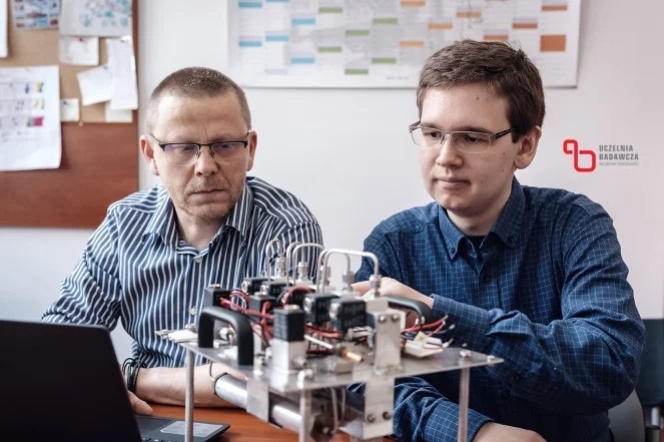Date added: 2022-05-31
Green chemistry - a chance for alternative CO2 sequestration

Ionic liquids are substances with special properties. They are consistent with the assumptions of the green chemistry. Properties that characterize modern ionic liquids are the following: negligible vapor pressure, high thermal stability (high decomposition temperatures), low melting points and low toxicity. These properties allow wide use in various fields of industry and scientific research. This raises high hopes in the energy industry. They are used in outlet points from various processes, where they can purify gases, e.g. in chimneys, washers, scrubbers, etc.
– Our goal is to find substances that will be the best carbon dioxide absorber and their use will be as ecological and safe for the environment as possible - explains Karol Baran, a graduate student at the Faculty of Chemistry and the originator of the research.
Development of new ionic liquids with specific properties that the scientists are looking for is a long-term process. One of the methods is synthesis of many compounds, which, however, is extremely time-consuming, costly and ineffective.
– In order to find the substances we are interested in, we do not use synthesis, but conduct studies using the QSPR methodology, i.e. the method of studying the quantitative relationship between the property and structure, explains Prof. Adam Kloskowski. – By conducting computer model research as part of chemometric and simulation methods, one can find the properties of substances that determine the properties we are looking for, i.e. the ability to absorb carbon dioxide, biodegradability, but also density, viscosity or thermal transmittance.
– Our research consists of several modules - explains Karol Baran. - In the first stage, we create models that combine the properties of ionic liquids with their chemical structure, using statistical methods, machine learning and artificial intelligence. Subsequently, we run computer simulations, using molecular dynamics, which allow us to explore the mechanism of the process, learn about how the liquid absorbs CO2. In the last stage, using liquids with the best parameters, we intend to conduct experiments that will finally confirm their properties.
The results of the research will be presented in the master's thesis of Karol Baran, who is already planning to continue his research at the doctoral studies.
– Research on the absorption of carbon dioxide requires time and patience - emphasizes Prof. Adam Kloskowski. - This project does not end them and is only the initial stage. We are planning about 4-5 years of research.

The project titled “Should a good carbon dioxide absorbent mainly be free space? - a case study of 4-cationic amino acid ionic liquids" is conducted under the Radium Learning Through Research Programs
Granted funds: PLN 23 980
Project implemented under Advanced Materials Center

